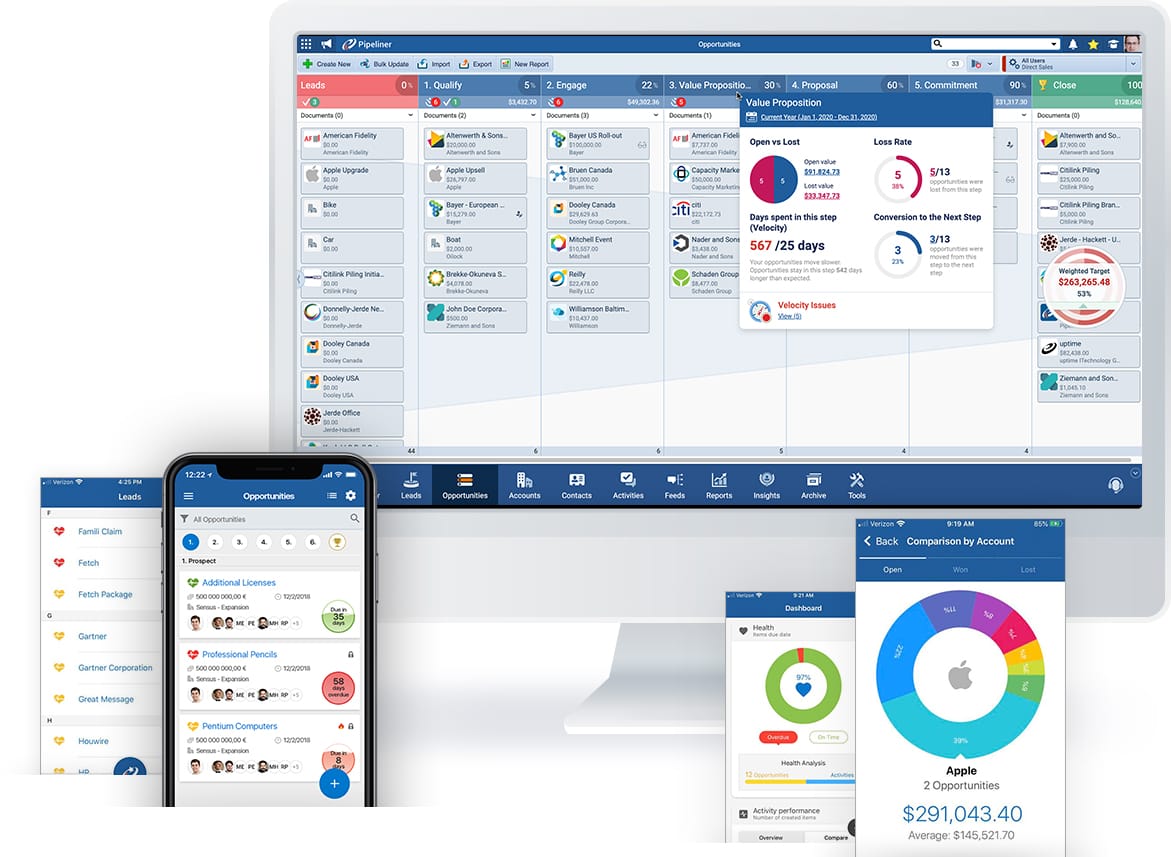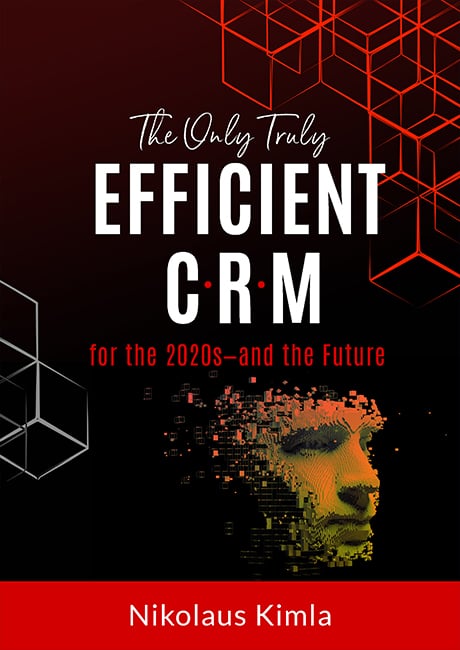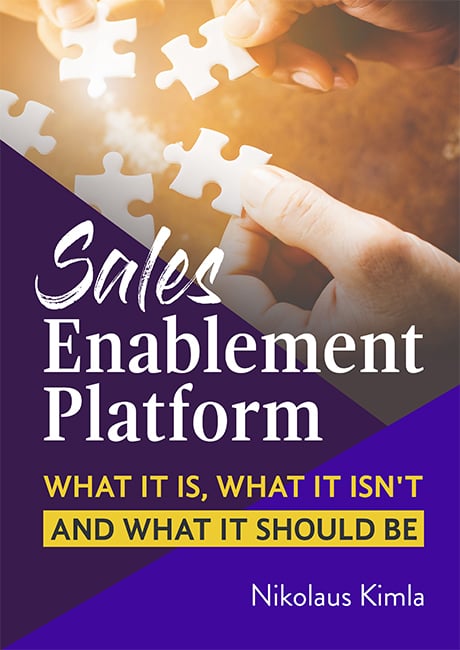Sales ProcessSales Process Sales Process is a series of strategic steps or a set of activities aimed at driving sales growth through the alignment of personnel, market insight, methodologies, relevant business units, and technology.
What is CRM
- What is CRM?
- Customer Relationship Management Software
- Account Management Software
- Contact Management Software
- Sales Lead Management
- Opportunity Management
- Sales Pipeline Management
- Customer Relationship Mapping
- Sales Enablement Tools
- Sales Management Software
- Sales Process
- Sales Reporting
- Task Management
- Custom Fields
- Team Collaboration
- KPIs for Sales & Leading and Lagging Indicators
- CRM Past Failures?
What is The Sales Process?
A sales process is a series of critical steps your sales team can take to complete a sales cycle. It covers every stage of a potential customerCustomer Customer is an individual or an organization that purchases a product or signs up for a service offered by a business.’s sales journey, from initial contact to closing the deal. Your sales reps can take prospects from being aware or unaware of their needs to paying for your offerings to meet these needs by following a sales process.
A salesperson can serve as a guide for your sales team to successfully move prospects through the sales cycleSales Cycle Sales Cycle is a repeating process characterized by a predictable sequence of stages that a company undergoes as it sells its products and services to customers. until they are converted into customers. The finest sales processes also have steps or phases that specify how salespeople can maintain healthy customer connections.
A customer-centric sales process is: Smart companies match their sales process steps to their customers’ purchasing patterns and processes.
Transparent: All stakeholders should have a clear understanding of each stage and element of the sales process.
Predictable: The expected outcomes of each stage, as well as the flow from one step to the next, should be defined in advance.
Goal-Oriented: The sales process should direct salesDirect Sales Direct Sales is the method of selling a product or service in a location other than the associated retail stores or offices, wherein the seller personally engages a prospect in a physical or face-to-face environment such as a home or a cafe. teams on how to achieve their objectives.
Flexible: Sales processes should be adaptable to changing business and customer needs, technological advancements, or changes in sales operationsSales Operations Sales Operations is a collection of aligned business processes, strategic implementations and other activities aimed at achieving organizational goals, specially in the areas of sales revenue, market coverage and growth..
Importance of Building a Sales Process
These are the advantages of developing sales process steps for your company:
- You can optimize your sales team’s structure to support the sales process and identify the major challenges in the sales cycle.
- It will be easier to train new salespeople.
- It assists you in identifying short-term and long-term goals, as well as how each step supports the next.
- It identifies areas where time and resources are being wasted, allowing you to eliminate activities with low returns on investment and focus your efforts on activities with higher returns.
- This allows you to invest in training, education, and practice to improve areas where you are weak, which will help you match your success in other parts of it.
Experience Pipeliner CRM Now
Stages to Creating Sales Process
1. Prospect
Prospecting is crucial as the first step in the sales process because it determines how the rest of the steps will proceed. Prospecting entails locating new sales leads. To find the right prospects, develop buyerBuyer A buyer is an individual or organizational entity that purchases a product or subscribes to a service. personas and ideal customer profiles based on people who have previously purchased from you and articulated why they did so.
Prospecting can be done using a variety of online and offline tools. Emailing and social sellingSocial Selling Social Selling is the deliberate use of online social networks as sales channels, where sellers directly engage and develop relationships with prospects by probing their needs and providing relevant and valuable insight. via platforms such as LinkedInLinkedIn LinkedIn is a social network for the business community. are examples of online tools. Cold calling, seminars or webinars, trade expos, and industry events are instances of offline tolls.
2. Connect and qualify leads
The following step in the sales process should be to connect with prospects and determine whether or not your offerings are a good fit for them. Determine whether taking them through the rest of it would be beneficial.
A sales representative can contact a leadLead Lead refers to a prospect or potential customer (who can be an individual or organization) that exhibits interest in your service or product; or any additional information about such entity. via discovery callDiscovery call A discovery call (might be used interchangeably with a qualifying call) is the first call with a potential customer, designed to determine if they are a good fit — wherein the seller can start building rapport, set the tone for the relationship and gain deeper insight about the prospect’s challenges. or email to learn:
- Position in their company
- Daily responsibilities
- They are looking for solutions to problems.
- Why is resolving the issue critical to their business?
- Other options are being considered.
A sales qualification method can help ensure that the prospects you’re pursuing will likely buy from you.
3. Research The Company
A sales representative’s research must be thorough and multifaceted. At this point, the sales representatives must learn about the prospect. Such research allows them to put themselves in the shoes of the prospect and better understand their problems and needs.
4. An Effective Pitch
Each demonstration or pitch should be tailored to the prospect’s specific use case. Pitching takes time, which is why the step of qualifying leads is so important. Salespeople should not waste their time pitching to prospects who are unlikely to convert into actual sales.
5. Handle Objections
Prospects are bound to have questions and concerns about your offerings. If your salespeople can successfully answer all of the prospects’ questions and allay their fears, it will be much easier to close the deal without any hiccups.
Handling objections allows salespeople to reinforce the prospect’s understanding of why your offerings are the best solutionSolution Solution is a combination of ideas, strategies, processes, technologies and services that effectively helps an organization achieve its goals or hurdle its challenges..
6. Close the Deal
Closing a sale depends on completing various processes such as submitting a quote, final negotiations, signing the contract and other important documents, and so on.
If the sale does not go as planned, sales representatives should enrol the prospect in a nurturing programme to re-engage them in the future.
7. Nurture and Continue to Sell
The sales process does not end when a sale is made. When a prospect becomes a customer, they can be assigned to an accountAccount Account refers to a record of primary and background information about an individual or corporate customer, including contact data, preferred services, and transactions with your company. manager or customer successCustomer Success Customer Success is a proactive mindset, function, department or strategy commonly adopted by B2B companies to optimize business with customers, reduce churn rate, drive profits and increase the predictability of recurring revenue. representative to begin the onboardingOnboarding Onboarding is the process or act of introducing a new customer to your product or service; or integrating a newly hired employee into your workforce or team. process.
Nurturing a relationship with the customer will provide opportunities for cross-sellingCross-selling Cross-selling B2B is when a customer purchases a product and they are offered a second product at a discount or as a reward. and upsellingUpselling Upselling is a selling technique where a seller introduces a more expensive, an upgrade, or add-on to a buyer to increase the average order value., as well as qualified referrals.

If you can’t describe what you are doing as a process, you don’t know what you are doing
 W. Edwards Deming
W. Edwards DemingKey to Successful Sales Management
Here are the essential steps to creating a precise sales process:
Define “Sales Process”
A sales process is a detailed series of steps that takes a sale from lead to close. These definitions may appear obvious, but if everyone involved in the creation of it does not understand and agree on its definition, there will most likely be problems later on.

Outline Your Basic Sales Process
Have some interview representatives. Discover the typical steps they take when making a sale. You’ll notice that successful salespeople always take the same steps. You can then start outlining your basic sales process.

Identify the Objective
Following that, you should specify the goal of each step. Keep in mind that each stage’s action should progressively increase the likelihood of a purchase and move a prospect closer to the close.

Sales AnalyticsAnalytics Analytics is the active study of different types of data with the aim of discovering meaningful patterns and translating these into insight (such as historical analyses and forecasts), or action (such as those intended to improve business performance).
Once you’ve defined each stage of your sales process, you should define and implement precise metricsMetrics Metrics are quantities that are measured and used to: that track the actions of each stage. Sales analytics are critical to the organizationOrganization Organization is a cohesive group of people working together and formally bound by a shared identity (e.g., one team, company, club, etc.) and a common purpose (e.g., business growth, athletic victory, etc.).’s success.
Evaluation
It’s time to evaluate your process after you’ve fully defined it and have metrics in place to track its progress. Feedback from sales representatives should be included as part of this testing.
Dynamic Sales Process
Because markets shift, products evolve, and new challenges emerge, a sales process should never be so rigid that it cannot be amended or adjusted. It should be adaptable so that it can change as needed.
Take the time to design your sales process completely. It fetches everyone on the same page and results in a well-oiled sales force that works as a unit.




